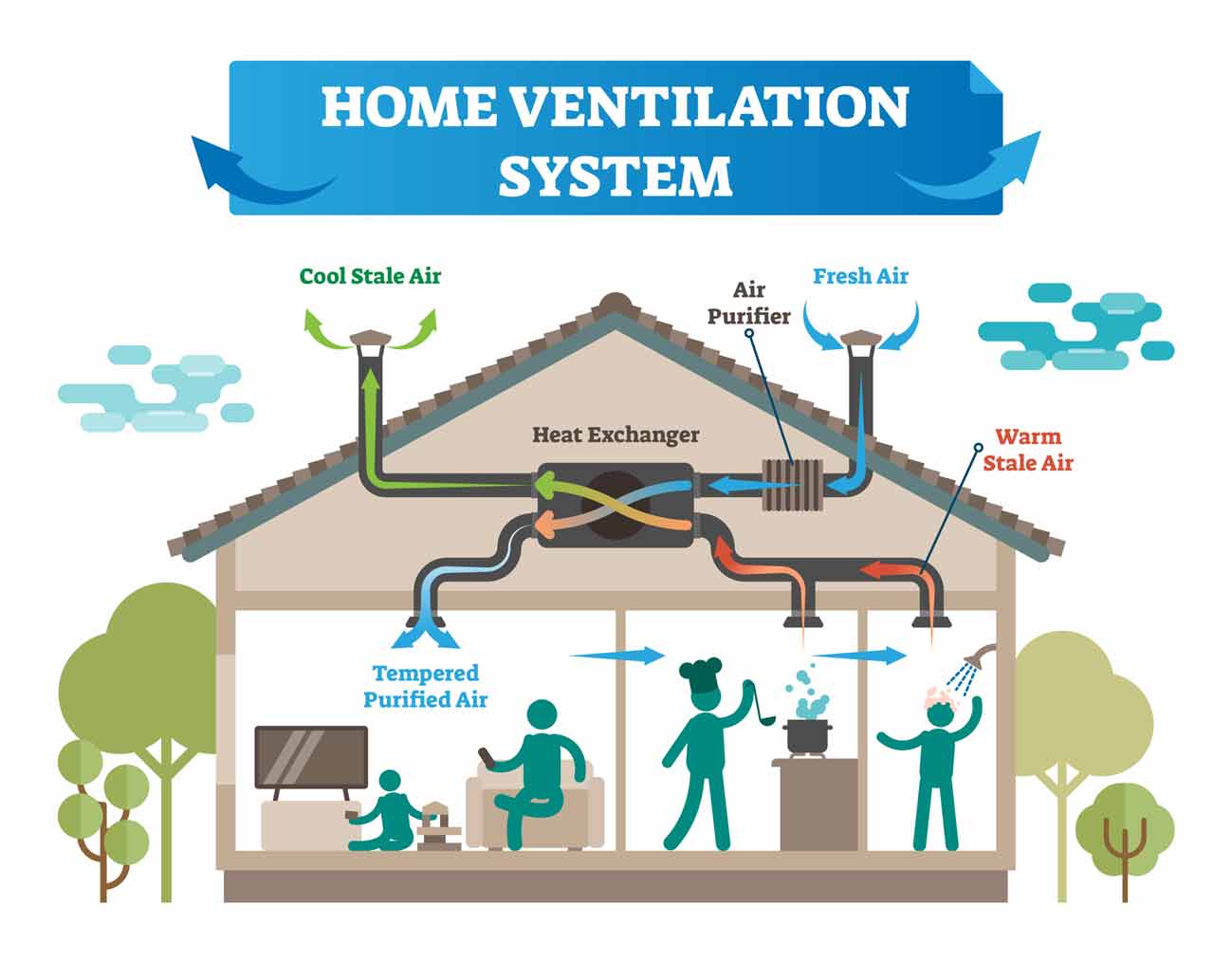How HRV Regulates Indoor Climate
Wiki Article
The All-Inclusive Overview to the Uses of Heat Recovery Ventilation in Modern Structures
Heat Recovery Ventilation (HRV) systems represent a considerable improvement in developing modern technology (HRV Heat Recovery Ventilation). They offer an approach for trading stagnant interior air with fresh outdoor air while reducing power loss. This method not only enhances interior air quality but also adds to power efficiency in both household and industrial structures. Recognizing the various applications and advantages of HRV can reveal its crucial duty in modern-day style and sustainability efforts. The ramifications of this innovation are worth checking out betterRecognizing Heat Recovery Ventilation Equipments

Lots of contemporary buildings focus on energy performance, recognizing heat recuperation air flow (HRV) systems is important for maximizing indoor air top quality and lowering energy usage. HRV systems work by transferring warm from stale indoor air to incoming fresh air, properly maintaining comfortable interior temperatures while lessening energy loss. These systems contain a warm exchanger, fans, and ductwork that promote the blood circulation of air. Throughout winter season, HRV devices record and recycle heat from the outbound air, while in summer, they can aid cool down incoming air. By continuously exchanging air, HRV systems likewise minimize moisture and the concentration of interior toxins. Correct setup and maintenance of HRV systems are necessary for their effectiveness and performance in improving general structure efficiency and convenience.
Advantages of Heat Recovery Ventilation
Heat recovery ventilation systems offer countless benefits that enhance both energy effectiveness and indoor air high quality in contemporary structures. By recording and recycling energy from exhaust air, these systems considerably lower heating & cooling prices, bring about lower power intake. They maintain a constant circulation of fresh outside air, reducing the risk of indoor air contaminants and irritants. This continuous exchange aids manage moisture degrees, protecting against mold and mildew growth and making sure a much healthier living atmosphere. Additionally, HRV systems add to sustainability goals by lowering overall carbon impacts. Their ability to maximize air flow without compromising thermal convenience makes them an important enhancement to modern building style, promoting both economic and environmental benefits.Applications of HRV in Residential Buildings
As home owners significantly focus on energy performance and indoor air top quality, the applications of warmth healing ventilation (HRV) systems in household buildings have actually ended up being extra common. HRV systems are particularly beneficial in firmly secured homes, where preserving fresh air circulation is essential for preventing wetness build-up and interior pollutants. They efficiently move warmth from outgoing stagnant air to inbound fresh air, lowering energy costs related to heating and cooling. In addition, HRVs can boost comfort levels by regulating look these up humidity and temperature level. They are likewise adaptable for different domestic layouts, including single-family homes and multi-unit structures. In general, incorporating HRV systems sustains sustainable living methods while ensuring a much healthier interior environment for owners.HRV in Commercial and Commercial Settings
In commercial and commercial settings, the execution of heat recuperation ventilation (HRV) systems has actually become significantly crucial for enhancing power efficiency and keeping air quality. These systems effectively move warm from exhaust air to inbound fresh air, lowering the need for added home heating or air conditioning. This not only decreases power costs however additionally adds to sustainability efforts. Industries click here to find out more such as manufacturing, warehousing, and office complex benefit significantly from HRV systems, as they help manage temperature and moisture levels, making certain a comfortable and effective environment. Moreover, HRV systems aid in getting rid of pollutants and excess dampness, improving interior air high quality. As regulations around air quality come to be stricter, the adoption of HRV innovation is most likely to expand, making it a vital component of modern business and industrial infrastructure.Future Trends in Heat Recovery Ventilation Innovation

Often Asked Inquiries
How Does Heat Recovery Ventilation Effect Indoor Air Quality?
Heat recovery ventilation greatly improves interior air quality by constantly trading stagnant indoor air with fresh outdoor air while recouping power. This procedure reduces pollutants, preserves perfect humidity degrees, and assures a healthier environment for passengers.Can HRV Solutions Be Mounted in Existing Buildings?
HRV systems can indeed be installed in existing buildings. Retrofitting may call for modifications to ductwork and ventilation designs, yet it significantly boosts energy effectiveness and indoor air quality, making it a viable choice for older structures.What Upkeep Is Needed for HRV Solutions?

Exist Specific Climates Where HRV Is Extra Effective?
Heat recovery ventilation systems are specifically effective in climates with considerable temperature distinctions between periods. These systems enhance energy performance by recouping warm from exhaust air, making them excellent for both cool and moderately cozy settings.How Do HRV Equipments Affect Energy Costs?

Report this wiki page